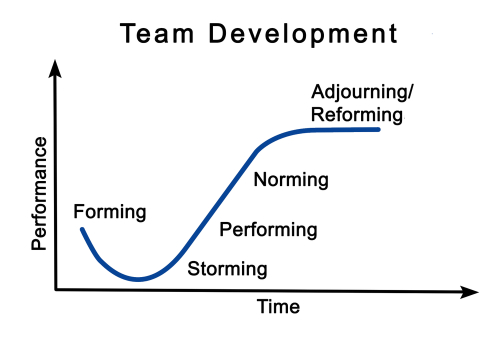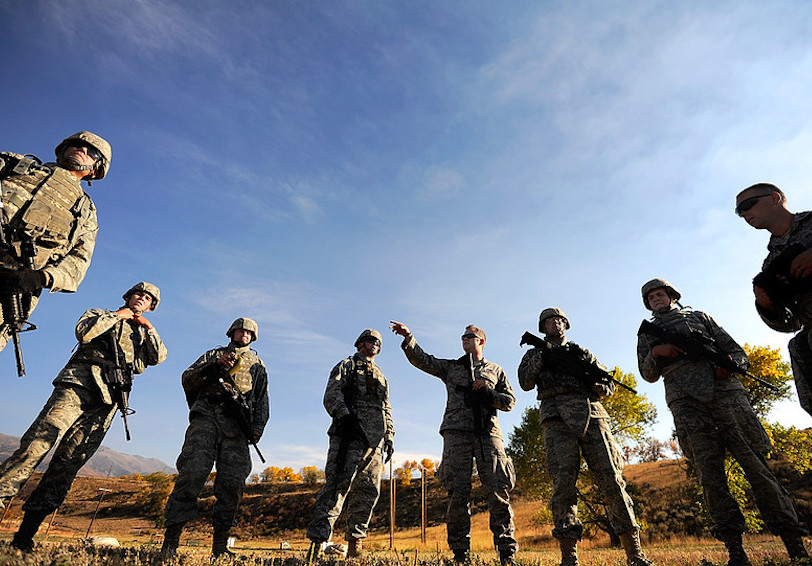Teams are the foundation of the military and the key to mission success. A team is a unit of 2 or more people who come together to achieve a particular goal. But what makes a successful team? The dynamic—and sometimes delicate—process of building a team requires thoughtful consideration of who makes up the team, its goals, and how team members relate to one another.
Teams allow the military to accomplish tasks that no one person could do alone. As military combat has changed in the 21st century, high-performing teams that can fight in unpredictable and fast-changing environments are more important than ever. Today’s leaders are also more focused on the effectiveness of “multi-team systems”—looking not just at how individuals within a team work together, but how different teams work together as well.
Team formation and lifecycle
Effective teams don’t arrive out of thin air (or basic training). Team development is a process that usually includes the following stages:
- Forming: The formation stage is the beginning of the team—the moment a need is identified, a goal is created, and a group comes together. This stage is typically about getting to know teammates and establishing relationships (though often members will still be quite guarded). The team also might start to develop timelines, understand individual roles, and observe ground rules.
- Storming: The storming stage is characterized by normal intergroup conflict as teammates become less guarded, more authentic—and territorial of their assignments. As the team starts to work together, spend more time together, and encounter obstacles, interpersonal conflict often begins. Team members also might have some negative feelings about their task assignments (either not wanting to complete a task, or internally questioning the need to do it), which can contribute to conflict.
- Norming: As cohesion develops and members begin to feel comfortable in their roles, teamwork starts to feel more natural. Team members generally become more open to feedback and are able to manage and avoid conflict because it’s best for the sake of the whole.
- Performing: Over time, the team starts to hit its stride and feel a sense of shared vision. At this stage the team can effectively work together, respect differences, problem solve, and complete tasks. In this stage team members are able to communicate well (listening and being heard).
- Adjourning: Once the goal of the team is met or the need is no longer there, some teams disband. In military settings, it’s more likely that some members leave and other members join, beginning the cycle again.
Measures of team effectiveness
What makes a team successful? Assess the following areas:
- Performance: How well does the team build cohesion, accomplish tasks, and achieve goals? Team performance is ultimately about replication and accomplishing different task assignments over and over. Keep in mind, assessing team performance might involve looking at an individual’s achievement as well as group outcomes to reach optimal performance.
- Leadership: What are the personality traits, behaviors, and interaction styles of the designated person (or people) to guide the direction of a team, manage its operations, and coordinate with other units? Successful leaders take a bird’s eye view to see how team members work together and how their team fits into the larger military system.
- Composition: Who makes up the team; what are their personalities; what sort of knowledge, skills, and abilities do they bring; and how do they balance each other out? Consider how long a team stays together and how membership changes are handled. Teams with varied skills and experience are often more innovative and perform better, and effective teams also have good chemistry.
- Training: What education and preparation do team members need to do their jobs and adapt to new challenges? Effective training focuses on both task-oriented skills and interpersonal skills. To assess training, examine whether it’s delivered efficiently, with thought to the amount of time needed and the methods used.
- Process: How do team members coordinate, build interpersonal relationships, and actually work together (such as planning, problem solving, and communication)? Process is the crux of team effectiveness—it’s the way the whole becomes greater than the sum of its parts. Successful teamwork comes from strong conflict management skills, strong motivation and engagement, and effective emotional regulation.
Whether you’re a leader or want to be a better teammate, understanding how teams come together and adapt is key for success. Consider the teams you’ve been a part of: How have you experienced the team life cycle? How do you see the elements of team effectiveness play out in your most successful teams? What do you remember about the teams that weren’t so effective? By taking time to reflect on these questions and the different measures of team effectiveness, you and your teammates can improve your performance and become stronger together.
